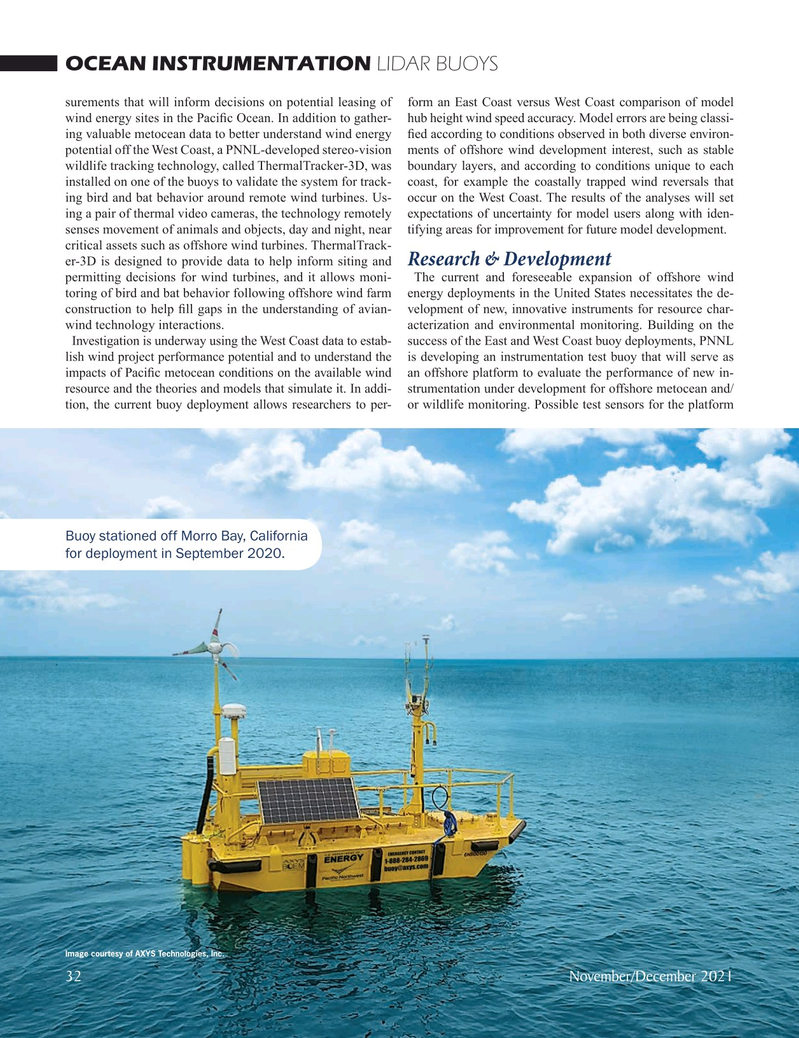
Page 32: of Marine Technology Magazine (November 2021)
Ocean Observation: Gliders, Buoys & Sub-Surface Networks
Read this page in Pdf, Flash or Html5 edition of November 2021 Marine Technology Magazine
OCEAN INSTRUMENTATION LIDAR BUOYS surements that will inform decisions on potential leasing of form an East Coast versus West Coast comparison of model wind energy sites in the Paci? c Ocean. In addition to gather- hub height wind speed accuracy. Model errors are being classi- ing valuable metocean data to better understand wind energy ? ed according to conditions observed in both diverse environ- potential off the West Coast, a PNNL-developed stereo-vision ments of offshore wind development interest, such as stable wildlife tracking technology, called ThermalTracker-3D, was boundary layers, and according to conditions unique to each installed on one of the buoys to validate the system for track- coast, for example the coastally trapped wind reversals that ing bird and bat behavior around remote wind turbines. Us- occur on the West Coast. The results of the analyses will set ing a pair of thermal video cameras, the technology remotely expectations of uncertainty for model users along with iden- senses movement of animals and objects, day and night, near tifying areas for improvement for future model development. critical assets such as offshore wind turbines. ThermalTrack- er-3D is designed to provide data to help inform siting and Research & Development permitting decisions for wind turbines, and it allows moni- The current and foreseeable expansion of offshore wind toring of bird and bat behavior following offshore wind farm energy deployments in the United States necessitates the de- construction to help ? ll gaps in the understanding of avian- velopment of new, innovative instruments for resource char- wind technology interactions. acterization and environmental monitoring. Building on the
Investigation is underway using the West Coast data to estab- success of the East and West Coast buoy deployments, PNNL lish wind project performance potential and to understand the is developing an instrumentation test buoy that will serve as impacts of Paci? c metocean conditions on the available wind an offshore platform to evaluate the performance of new in- resource and the theories and models that simulate it. In addi- strumentation under development for offshore metocean and/ tion, the current buoy deployment allows researchers to per- or wildlife monitoring. Possible test sensors for the platform
Buoy stationed off Morro Bay, California for deployment in September 2020.
Image courtesy of AXYS Technologies, Inc.
32 November/December 2021
MTR #8 (18-33).indd 32 11/22/2021 12:41:24 PM

 31
31

 33
33
